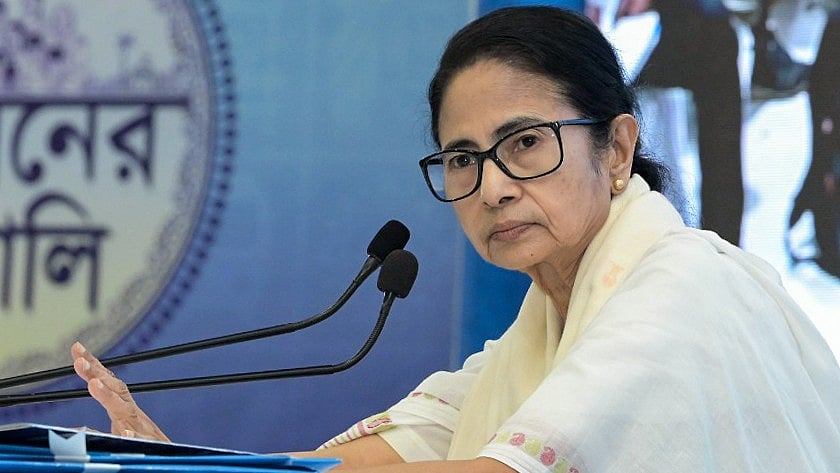If the myriad floats at the Republic Day parade exhibit the cultural diversity of our wonderful land, nothing like a whiff of India’s millions of kitchens to drive home our enormous culinary diversity! Replete with regional and traditional cuisines, and further buoyed by foreign influences, we asked some of our well known chefs to pick out the specialities that best symbolise our culinary heritage... Not an easy task given the great flavourful melting pot that is India!

Bisi Bele Baht |
However, there are certain clear winners — rice preparations, for one. Shares Dinesh Mhatre, Executive Chef, Hilton Mumbai International Airport, “Rice is the ingredient that perfectly symbolises our rich cultural and food heritage. It doesn’t matter how it’s cooked – steamed, boiled or fried – rice is included in pretty much every meal of the day in India, which is the second largest rice-growing country worldwide.”

Butter Chicken with naan |
Pointing out that, as per a study, 90 percent of India’s rice is consumed by Indians, he adds, “Rice preparations from each corner of India have a unique taste particularly due to various factors – spices, cooking method, minerals in the water etc.” If South India cannot do without its Idli, Appam, Pongal and Payasam, Maharashtra feasts on its Takache Ghavane, Bhakari, Masala Bhat, Wari Bhat (for fasting), and rice kheer. North India is fascinated by its Pulao and Biryani, while Zaffarani Pulao and Kashmiri Mitha Pulao are redolent with the flavours of Kashmir. West Bengal consumes its Jhaal Muri, Aloo Anda, Biryani and Phirni copiously while rice also features in Rajasthan’s Gatte Ka Pulao and Kesariya Methi Chawal. “From daily staple diet, to special festive occasions, rice plays an important part in the culinary fabric of our country,” smiles Chef Mhatre, as he rests his case.

Gatte ka pulao |
Another rice believer, is Chef Kamlesh Rawat, Executive Chef, Radisson Mumbai Goregaon, who plumps for Khichdi. “India has a wide range of regional food specialities, but I feel Khichdi is that food which best symbolises our culture and food. While fasting we have Sabudana khichdi made of sago. If you are unwell you have moong dal khichdi as it is easy-to-digest food. Karnataka serves a similar dish by the name of Bisi Bele Bath. Khichdi is one meal you can give children and the old alike,” he explains, adding, “It can be made in various flavours and truly defines the taste of India.”
Millets happens to be the choice of grain for Chef Michael Swamy, who maintains, “Millets have been a major part of Indian cuisine since time immemorial. Not only are they a rich natural resource for fibre, but they are easily digestible too. A great source of energy and minerals, millets can be quite versatile in their culinary use given their mild flavour. From upma and as cereals for breakfast to accompaniments for curries in place of rice, added to stews and often used ground to make breads like rotis, dosas and pancakes, they can also be used in sweets and desserts.”

Kheer |
The ever-popular Chef Varun Inamdar of ‘The Bombay Chef’ fame, votes for a more piquant choice. “Chutney, in my humble opinion, silently speak volumes about India’s rich culture and heritage. Every state, religion, community, tribe has ways of utilising indigenous fruits, vegetables, roots, tubers, dairy, shrubs, nuts, spices, salts and herbs to create this little packet of flavour ranging from sweet, sour, bitter, astringent and spicy. Not just this, they are created using a range of temperatures from sun ripened to hot and cold alike.”
Chef Vicky Ratnani, who whips up a storm at his The Korner House, chooses the thali as a symbol of Indian food. “That’s because it covers all the six tastes generally sweet, salt, sour, spicy, bitter, astringent. These flavours form the balance. Every region has its own version but the underlying principles are the same,” he vouches.
For Chef Manish Khanna, who tempts with his Brownie Point and Noir, there is one dish that is similar to all regions, despite the diversity in soil type, climate and culture — kheer. “From kheer in the north, to the payasam of the south, to the kheer kadam and payesh from the east to the Gujarati kadhi rice or khichdi of the west, this dish is found all around India, so I would say, it’s something which is authentically Indian.”

Jhal Muri |
Avinash Kumar, Executive Chef, Novotel Imagica Khopoli, is loathe to choose just one... “Choosing just one food item would not do justice to our culinary heritage,” he says, “but if I still have to narrow it down to one ingredient then spices play an integral role in almost each and every food item being cooked in our households. The spice blend might change from one region to another depending upon the culture, climate, ethnicity, but they are always there in some or other form. In the Vedas too you will find mentions of spices being used in Indian cuisine from thousands of years. Different climatic condition and terrain diversity have also given us a great choice of spices and ingredients to choose which results in unique and diversified flavours of Indian cuisine from one region to another.”
Going against the grain, Vibhav Verma, Executive Chef, Grand Mercure Bangalore, chooses a rather surprising fave. “The nationally and internationally well-known Butter Chicken & Naan accurately depicts Indian culture and heritage. Butter Chicken, which originated in Northern Indian in late 1940s gets its rich flavour from cream, butter and Indian masalas. Not just in India, internationally as well people think of butter chicken with naan when asked about Indian food. It’s one among the top Indian food served widely around the world.” Can’t dispute that!

Pudine ki chutney |
Chef Gopal Jha, Executive Chef, Novotel Mumbai Juhu Beach cleverly avoids talk of dishes but goes straight to the fave traditional plates — banana leaves. “India has a long-standing tradition of serving food on banana leaves. Placing hot food on these leaves emanates several nutrients that enrich your food and is considered healthy. The banana leaf also adds to the aroma of food and enhances the taste.”
Maintaining that Indian food is slowly but surely making its mark on the world, Swanand Thipsay — Sous Chef, ITC Grand Central, believes that in India there is no single, national cuisine. “The food of India is rather region specific and each state boasts of a large variety of cuisines. Maharashtrian cuisine itself includes varieties of the Konkan, Vidarbha, Marathwada, Khandesh, Paschim Maharashtra and Mumbai – a dizzying variety. “While it would be inappropriate to generalise the diversity of food of India as Indian cuisine, one thing that can be generalised is that food is the ingredient that binds all Indian families together.”
Absolutely no differing opinions on that one!









